|
Related FAQs: Faviids, Faviids
2, Faviids 3, Faviid Identification, Faviid Behavior, Faviid Compatibility, Faviid Selection, Faviid Systems, Faviid Feeding, Faviid Disease, Faviid Disease 2,
Faviid Disease 3,
Faviid Disease 4, Faviid Disease 5, & Faviid
Reproduction/Propagation,
Stony/True Coral,
Coral System Set-Up, Coral System Lighting, Stony Coral Identification, Stony Coral Selection, Coral Placement, Foods/Feeding/Nutrition, Disease/Health, Propagation, Growing Reef Corals, Stony Coral Behavior,
Related Articles: Large Polyp Stony
Corals, Stony or True Corals,
Order Scleractinia, Dyed
Corals,
/The Best Livestock For Your Reef Aquarium:
"Honeycomb", Brain Corals,
More and Less, Family Faviidae, pt. 4
To:
Part 1, Part 2,
Part 3, Part 5,
Part 6, Part 7,
Part 8
|
|
|
By Bob Fenner
|
|
| Favia cf. pallida (Dana 1846). Hemispherical colonies
of rounded, crowned corallites of about 10 mm. in diameter. Septa
regular/uniform. Distributed from the Red Sea, East Africa to the Tuamotus.
Image made in Nuka Hiva, Marquesas, Polynesia. |
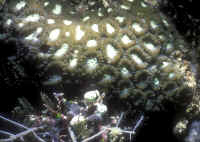
|
Bigger PIX:
The images in this table are linked to large (desktop size) copies. Click on
"framed" images to go to the larger size. |
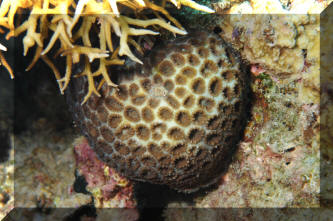 |
| Favia rosaria Veron 2000. Sub-massive to encrusting
colonies to a meter across. Corallites low-walled, close together, up to 20
mm in size. Flat (non-exsert) septo-costae. Pinkish brown walls with pale
oral discs. Bali 2014 |
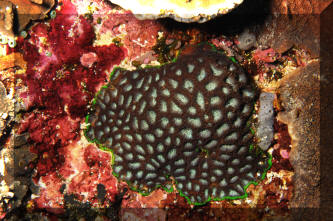
|
| Favia speciosa Dana 1846. Massive colonies,
corallites closer/further distanced depending on depth. Further apart with
increase. Many color varieties with contrasting schemes. Aquarium photo. |
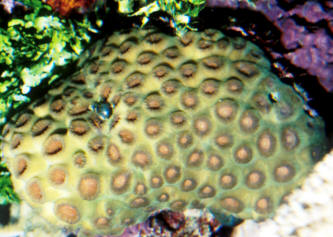
|
| Favia rotundata (Veron and Pichon 1977). Domed to
flat in shape. Corallites larger than many Favias, to 22 mm in diameter.
Fleshy in appearance. Red Sea images. |
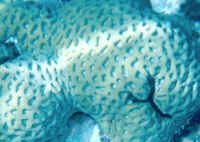 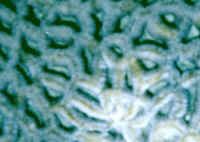
|
| Favia stelligera (Dana 1846). Colonies of round to
columnar/colonial in appearance, sometimes a few meters across. Uniform
septa and walls (not shared). Brown to green in color. Red Sea upper gulf
photos. |
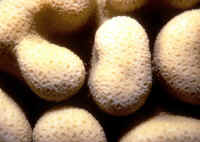 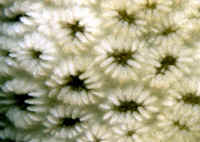
|
Bigger PIX:
The images in this table are linked to large (desktop size) copies. Click on
"framed" images to go to the larger size. |
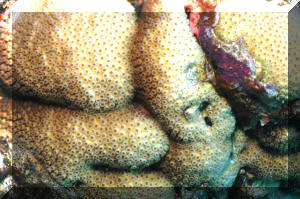
%20MD.JPG) |
Genus Favites Similar to the Genus Favia, but with fused/Cerioid
corallites, and shared corallite walls that show overlapping septa. Massive,
boulder like colonies, with corallites sharing walls. /WA Corals: massive or
encrusting • corallites 6-20mm diameter, angular or round • corallites
monocentric and often share walls or groove and tubercule formation separating
corallites • paliform lobe poorly developed • septal teeth can be large •
budding intratentacular or extratentacular
Some folks place this genus in the family Merulinidae.
Favites abdita (Ellis and Solander 1876). Colonies
massive, rounded or hillocky. Corallites likewise rounded, with thick walls.
Septa straight, with exsert teeth. Below: Bunaken, Sulawesi, Indonesia and
Right: Red Sea images where it is common.
Dipsastrea according to Joe Fish, family Merulinidae. |
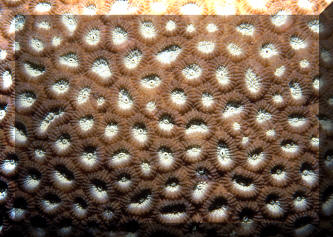
|
| Favites complanata (Ehrenberg 1834). Colonies
massive, with corallites slightly angled, with thick walls. Paliform lobes
weak, septa strong. Costae form a "star" where three corallites
converge. Bali 2014 |
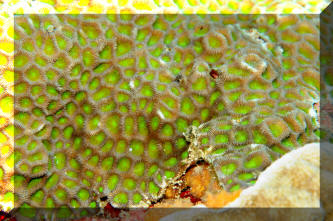
|
| Favites flexuosa (Dana 1846). Hemispherical or flat
colonies. Corallites deep with contrasting colored septa and centers. Septal
teeth large, paliform lobes weak. Red Sea image. |
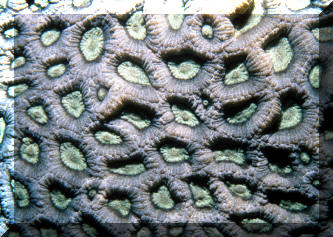
|
| Favites halicora (Ehrenberg, 1834). Typically made up
of irregular massive shapes. Corallites 11-13 mm in diameter. Yellow-tan to
greenish color. Here in the Gulf of Aqaba, Red Sea and Fiji. |
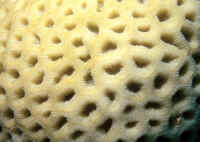
|
To:
Part 1, Part 2,
Part 3, Part 5,
Part 6, Part 7,
Part 8
|
|

